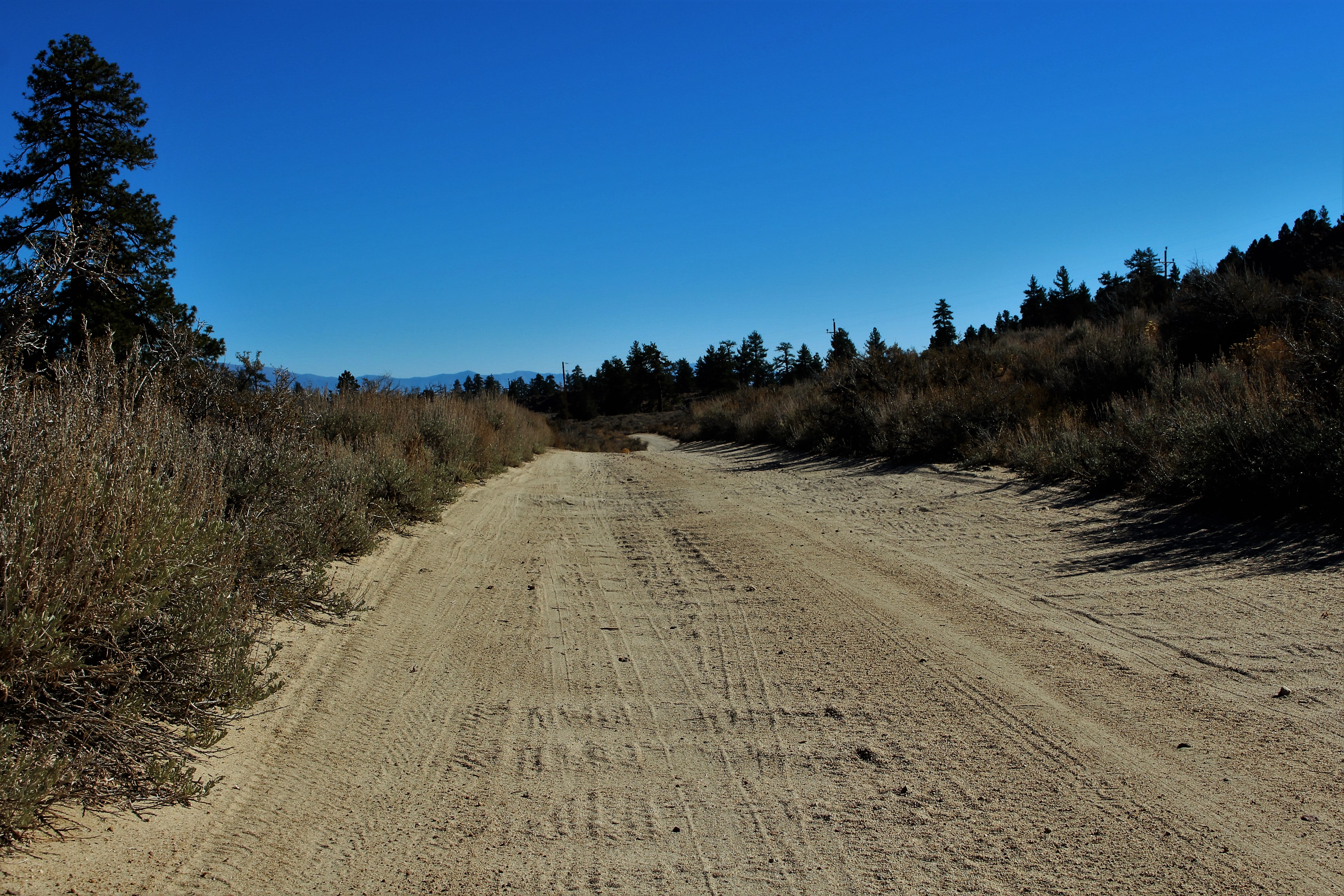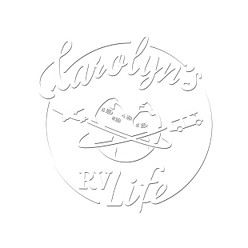Fun RV Living Fact of Life: How are Washboard Roads Formed?
We’ve all encountered them, and those of us who love to boondock on BLM land and National Forests drive on them a lot. Those ridged, bumpy, wall rattling, dish-clanking, drive shaft clunking, dirt or sand roads that are annoying as hell to drive on. So where do they come from? How do those ridges get created?
I finally looked up what causes dirt roads to washboard and ripple!
I figured you might be curious about this too!
There have actually been laboratory studies done and articles published in science journals about the phenomenon. And from what I’ve read, the science seems to be inconclusive.
Most road and physics experts believed washboarding (also called corrugation) is caused by a lot of traffic traveling on loose dirt, sand or gravel roads at speeds greater than 5 mph. An automobile’s suspension causes the tires to bounce, putting pressure on certain parts of the road, pushing up the sand or gravel, thereby causing ripples.
 However, laboratory studies have shown that even when “springy suspension of the car and the rolling shape of the wheel are eliminated”, washboarding occurs (source: Science Daily article “Physics of Bumpy Roads: What Makes Roads Ripple Like a Washboard?”)
However, laboratory studies have shown that even when “springy suspension of the car and the rolling shape of the wheel are eliminated”, washboarding occurs (source: Science Daily article “Physics of Bumpy Roads: What Makes Roads Ripple Like a Washboard?”)
So, while heavy traffic and suspension may be part of the problem, it seems there may be other (currently unidentifiable) factors at play.
How to drive on washboard roads
The next question is: how the heck do we drive on those annoying washboard roads safely and efficiently? Is it better to slow down or speed up?
I went to one of my favorite sources for this answer: MythBusters.
According to MythBusters and their field test, with a 1970 Cutlass Supreme, driving at 5mmph and then at 70 mph, they found that yes, indeed, at 70,mph, it is a smoother ride and the “high-speed camera footage revealed that the faster-moving wheels literally move across bumps in the road” (MythBusters, “Bumpy Ride“).
So, at higher speeds a vehicle can literally glide over the bumps whereas at 5 mph you feel every single one – and it prolongs the agony, right?
However, their test was with a Cutlass Supreme, not a 29′ Class C RV with all kinds of stuff to rattle around and make noise. I’ll stick with 5 mph!
How about you? Do you prefer to fly over them or take it slow?



I’m gonna keep it SLOW as well! I’m afraid faster will shake things loose!
Jimmy, that is exactly what I’m afraid of.. that my walls will just shake right off! And 70mph in a Class C? I’d topple over, I just know it! 🙂
my dad was in road construction all his life and he use to say washboard roads were caused by a grader operator that didn’t know how to set the blade properly. Sure are a lot of inept operators all over the US! but I believed him because ive learned there are a lot of inept ppl in all walks of life and as we go on, more and more! 🙂
Interesting, that’s not a theory I ran into in my research – although admittedly, I didn’t spend a ton of time researching every study! It does make sense – and yes, seems a lot of inept operators all around the world! Thanks for your insight! – Carolyn
Meh…Carolyn, yes, there are plenty of inept people, including those in laboratories. You can watch cars driving down dirt roads and learn how washboarding occurs, if you’re patient and understand fluid dynamics.
As a vehicle passes over the loose dust on the road surface, it creates a draft, a breeze in the direction of travel. (Of course, there are eddies and turbulence; it’s not a straight-line breeze.) This wind carries light dust that is tossed up, thrown, stuck to the tires briefly…whatever got it in the air, it’s carried by the breeze or just plain thrown a bit. The distance it’s carried is affected by its weight and surface area and other factors, such as whether it hits something else.
As this debris falls, a bit of it hits other debris, and so accumulates in its proximity. It’s much the same way waves on water are formed, but since the ground isn’t fluid when it’s not being tossed about, the waves are standing there…till your 14,000 pound Matilda comes along and adds to the piles! 🙂
Michael, Thank you for reading and sharing your thoughts on the subject. – Carolyn
Ok, how about taking the advice of an off roader. When we encounter this with the Jeeps and you are going a long way, as long as you have an air compressor, air down your tires to about 30 percent of normal pressure.
This will allow the tire to absorb the washboard without as much vibration. You will also have less chance of getting stuck on soft sand, (driving on a beach)
Keep your speeds below 30 MPH to not create heat in the tires which will damage them. Once you are past it, simply air them back up and be on your way.
Do this to all the tires!!
Dave – Excellent! Thank you. I’m sure this will help many of us! – Carolyn
Okay Dave, will you be there with an air compressor at the other end?
5 tons sitting on under inflated tires in a remote sit site sounds risky.
I have a Jeep and routinely air down, but also carry an air compressor. Research airing down tires for your rated tire and vehicle. What works for a Jeep wouldn’t necessarily work for an RV. And airing back up can take 30 minutes or more. Not all tires’ sidewalls can handle airing down. If I’m just going to be on a washboard road for an hour or so, I either take it really slow, or keep it around 30 mph (if safe). I tried going around 55 one time in a national, but I got a speeding ticket. Yes, a ranger actually gave me a speeding ticket- and if I chose to dispute it would go to federal court. I don’t do that anymore.
That was useful information Dave. Thank-you for sharing.
Carolyn, thank-you for doing research on this topic. I have gone fast and slow over roads like this. Now I know what to do.
The levy road along the Delta where we are currently staying is not a washboard but the road is so bad it is just crazy bumpy and full of dips. I think the only thing that will fix this, is a new levy!
Shelley – yeah those levee roads are pretty bad! Can’t imagine driving them with a 5th wheel – or in my RV! I tested the washboard roads leaving my last camp – and even at 25 – 30 mph it was a smoother ride. Who knew! Thanks for reading and commenting! Welcome back from your amazing journey! Enjoy the holidays with your family! – Carolyn
It is caused by the road grader operator. When the blade skips during grading. Most experienced graders can avoid this. And when it happens it is magnified each time a car drives over it. End of research
Tim,
Yes, that’s what a lot of my readers have been saying. Interesting that none of the “scientific” tests I saw didn’t mention that! Thanks for the answer! Happy Travels. Carolyn
I’m afraid not Tim. I live on a private dirt road. One day it was relatively smooth, the next morning, washboard. There was no traffic and no grading
When I studied this in college (BS Civil Engineering), we learned it was due to layers of the road surface (imagine a rug on a wood floor) acting in opposing directions due to forces exerted by vehicles traveling over the road surface.
Picture what happens if you run or stop running on top of a rug that is on top of a smooth floor. It will do the same thing, but in a much more exaggerated sense due to much lower friction levels between the rug and the floor than that between layers of the road surface.
There are many factors that influence this and cause washboarding, but in simple layman’s terms, this is an easy to understand analogy.
Charles, More great info! Thank you very much for reading and sharing your knowledge of the subject with us! All the best, Carolyn
Your answer gets my vote!
From having built a few dirt and gravel roads I can vouch for the partially correct theory of grading. Additionally when the road is constructed varying types of earth and levels of moisture are inadvertently incorporated. Clay compacts at a different pressure than sand and damp earth evaporates differently than dry. Vehicles over time hit these pockets and causes swells and dips making your ride more interesting.
Enough of that. Thank you for the great blog and your willingness to expose yourself in it.
Dave, It makes sense that there are a few factors involved in making these annoying roads. Thank you for sharing your expertise! – Carolyn
My wife says she reckons they need to change the old saying: “The only things for sure in life are death and taxes.” Add washboard roads!
George – Heee heee!!! That’s a good one – I may be using that! Thanks! – Carolyn
Here is an interesting article on this. It is from a show on NPR called Car Talk.
http://www.cartalk.com/content/how-drive-washboard-roads
Steve – Oh my gosh, I love Click and Clack! Thanks very much. I’ll check it out! – Carolyn
I rented a brand new Deluxe Cadillac and traveled to Death Valley for a week, I tried the do 70 MPH over a Washboard dirt roard in the brand new Cadillac, I heard a rather strange noise, I looked in my side mirror and seen pieces of black rubber flying up in the road, I stopped to look to see what it was?
It was my rear tire what was left of it, I was pretty much ready to drive on the bare metal rim in about a minute longer. I couldn’t figure out how to remove the dang Cadillac wire hub cap, It was a Theft resisted Hub cap !!
After an hour and about 7 Jeeps later that asked me if I needed help I changed the tire and put one of those Bicycle Spare tires back on the Rental car.
The 70 MPH trick didn’t work on my brand new Cadillac rental car. 🙂
Mark – At least it was a rental! Kind of odd that it shredded the tire like that. Thanks for the story! – Carolyn
I would go slow. It makes for a smoother ride.
Connie – Thank you for reading and sharing your thoughts! – Carolyn
I discovered a washboard road in the back country of New Mexico (Chaco Culture Nat’l Park) that went on for about 20 miles into the middle of nowhere. After trying it slow, I sped up – but not to 70 mph. I went about 45-50 mph and got a smoother ride, but I’ll bet the suspension on my rental car got quite a workout that day. You can sometimes find a “sweetspot” between the ruts that is smoother also.
Ron – Thanks for sharing your experience! I found even at 25mphh the ride is much smoother! Thanks – Carolyn
We were able to prove the high speed theory just a few weeks ago. We went camping out in Big Bend NP and we decided to take an off road trail to avoid driving 40 miles back to camp. As soon as we were off the pavement the washboards came to greet us. My hubby then said it was time to kick it into gear. As long as we sustained speeds over 40 mpg the roads were fairly smooth. We encountered a handful of folks all going 10-20 mpg and you could see the dread in their face. We were also in a F-250 4×4 truck so I think that helped also. LOL
Steph – Me too!!! I have been stepping on it on washboard roads (In all my clunky giantness) and even at 25-30 mph it’s smoother! Who knew!! Thank you for sharing your experience and confirming the validity of my research.(unofficially, of course) Happy traveling!
Getting a nice smooth feeling ride is one thing.
Having your tires and suspension last is another.
They are not necessarily the same.
good to know. thanks
I always go slow at 5 – 10 mph. But, mostly, I try hard to avoid camps with washer board roads longer than a few miles. But, I just may get up the gall one day to fly over the bumps at 50 mph to see what happens. Gulp!
Gloria – I have been testing these theories.. and going faster DOES make a smoother ride!! Anywhere from 25-45mph has drastically improved it!!
Thanks for reading and commenting! – C
Howdy Carolyn, I have looked at a few old west photos of roads back in the 19th Century before automobiles. I haven’t noticed any wash board roads that I can remember. I have followed the old California trail out in the west and there were still some traces back in the 1980’s out in the deserts. I saw no washboards. The old wooden wagons pulled by horses, oxen, mules etc didn’t have springs on the axles. The Concord coach had leather straps, buggies had springs under the seat. Maybe the wild west had no washboards like we do now days. But I always kind ah figured that the Devil put ’em there along with the Mosquitoes.
Rattlesnake, yes, the roads are caused by cars or grading – definitely a product of the industrial age. Thanks for the interesting info! – Carolyn
CAROLYN, I agree with you, go slow. I think driving fast is hard on the rig you are driving. I have driven both slow and fast but when I have driven fast I get concerned that it will knock something loose in the motor yet alone your RV. Driving slow allows you to take in the sites. People are always in such a hurry and miss so much in life. I love the fact you always take the Road Less Traveled. My Dad always did this and explained why. Boy was I blessed with beautiful places by doing this. Thank you for sharing your thoughts on this
Hi Carolyn, I hope you can give me some advice on what vehicle I should look for. I’ve been going back and forth on pros and cons of box vans, camper vans, motorhomes….I just don’t think I could afford or drive a large RV, though I love all the room you have in yours. But, of the others….if you didn’t have an RV….which would you decide to buy? I know with a box van it would be better to have a pass through to get from cab to the back; camper vans don’t seem to have much walking space; and I haven’t really looked at any motorhomes yet. So, anyway….sorry, I’m long-winded……if you didn’t get an RV which vehicle would you get? Thank you for responding!